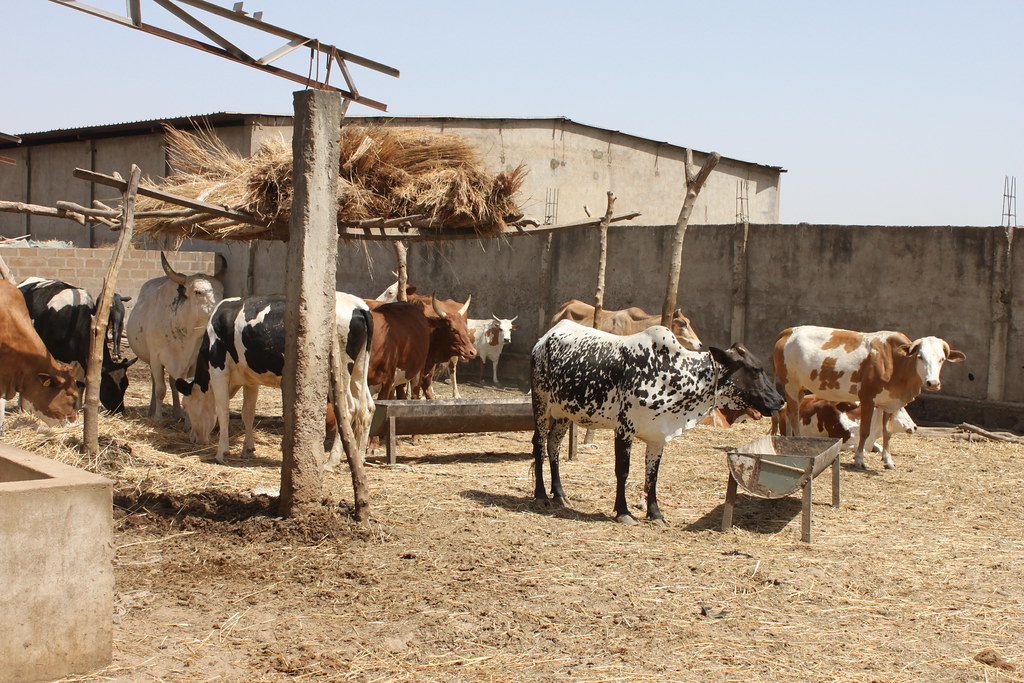Responses of farmers on reproductive performance of dairy cows in urban and peri-urban small scale dairy production system: The case of south east Oromia, Ethiopia
Keywords:
Calving intervals, Peri-Urban, Milk yield, CattleAbstract
The study was carried out to assess the reproductive performance of dairy cows in urban and peri-urban small scale dairy production system. The response of the farmers were involved factors affecting the reproductive performances such as; household characteristics, cattle management system, feed and feeding system, breeding method used and the reproductive performance parameters. A total of 180 dairy producer households (90 from Urban and 90 from peri-urban) were selected randomly from 6 Towns (Mojo, Batu, Shashemane, Dodola, Robe-Bale and Goba) and interviewed using structured and semi-structured questionnaire. The result of the study indicated that 25.9% of Urban and 22.3% of peri-urban dairy producer households were literates. The mean number of cattle/per household was 4.1±0.28 and 5±0.36 for urban and peri-urban dairy producers respectively. Bellow 15% of the farmers uses regular follow up on estrus detection and herdsman information. More than 90% of the respondents were indicated livestock production was constrained from getting year round feed supply both in quality and quantity. Out of the total respondents 55% were only AI service beneficiaries, 24.4% both natural matting and AI beneficiaries, and 20.6% non-AI beneficiaries. Based on this; the overall average of main parameters such as Age at first calving (AFC), Calving intervals (CI), Days open (DO) and Number of Services per Conception (NSC) are 36.97±0.58 months, 5.76±0.19 months, 14.75±0.19 months and 2.52±0.22 respectively. The result of study suggests that the overall production system observed could be categorized as fairly good in urban and poor in peri-urban. The overall production and reproduction parameters are bellow the standard level for optimum production. The major constraints mentioned by farmers and other stakeholders are; feed and feeding problem, poor cattle management, poor genetic potential and health problem in precedence.
References
Azage Tegegne and Alemu Gebreweld, 1997. Prospects for peri-urban dairy development in Ethiopia. In proceedings of the fifth national conference of the Ethiopian society of animal production. May 15-17, Addis Ababa, Ethiopia. 28-39.
Azage Tegegne, 1981. Reproductive performance of zebu and crossbred cattle in Ethiopia. M.Sc., Thesis, Addis Ababa University, Ethiopia.
Belayneh Engidawork, 2012. Evaluation of artificial insemination service efficiency and reproductive performance of crossbred dairy cows in North Shewa Zone, Ethiopia. Haramaya University, College of Agriculture. Dire Dawa, Ethiopia.
Central Statistical Authority of Ethiopia (CSA), 2013. Population projection of Ethiopia for all regions at Wereda level from 2014-2017. Central Statistical Authority, Addis Ababa, Ethiopia.
Central Statistics Agency of Ethiopia (CSA), 2014. Agricultural sample survey 2013/14: Vol II, Report on Livestock and Livestock Characteristics. Statistical Bulletin 573, Addis Ababa, Ethiopia.
FAO, 2005. Improving artificial breeding of cattle in Africa guidelines and recommendations. Austria, Vena.
FAO, 2005. Online database on food and agricultural products and producers. Accessed online at: http://www.faostat.fao.org/.FAO Rome, Italy.
Haileyesus Abate, 2008. Evaluation of artificial insemination service efficiency and reproductive performance of F1 friesian crosses in north Gonder Zone, Ethiopia. An M.Sc. Thesis Presented to the Department of Animal Sciences, School of Graduate Studies of Haramaya University.
IGAD (Intergovernmental Authority on Development), 2010. The contribution of livestock to the economics of IGAD member states. www.igad.lpi.org. Accessed on August, 2014.
Mekonen HaileMariam, 1994. Genetic analysis of boran, friesian, and crossbred cattle in Ethiopia. PhD Thesis. Swedish University of Agricultural Sciences, Uppsala, Sweden. 59-112.
Mukasa-Mugerwa, E., Tegegne, A., 1991. Reproductive performance in Ethiopia zebu (Bosindicus) cattle: Constraint and impact on production. In: Proceeding on the 4th National Livestock Improvement Conference. 13-15 November 1991. Institute of Agricultural Research, Addis Ababa. Ethiopia. 16-28.
USAID, 2010. The next stage in dairy development for Ethiopia. Dairy Value Chains, End Markets and Food Security. Cooperative Agreement. 663-A-00-05-00431-00. Land O'Lakes, Inc. Addis Ababa, Ethiopia.
Yifat, D., Kelay, B., Bekana, M., Lobago, F., Gustafsson, H., Kindahl, H., 2010. Study on reproductive performance of crossbred dairy cattle under smallholder conditions in and around Zeway, Ethiopia. Livest. Res. Rural Dev., 21(6).

Published
How to Cite
Issue
Section
Copyright (c) 2020 Aliyi Kedu

This work is licensed under a Creative Commons Attribution-NonCommercial-NoDerivatives 4.0 International License.



